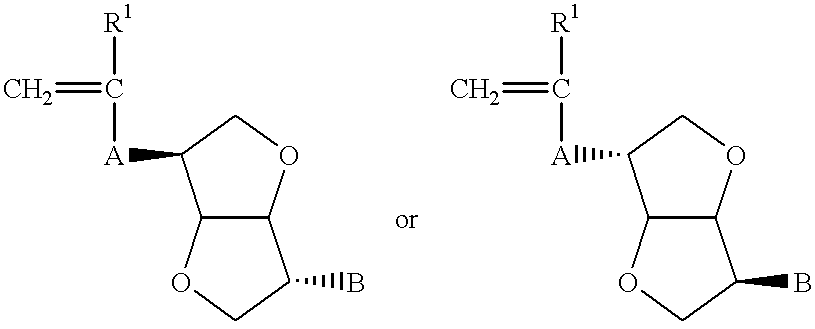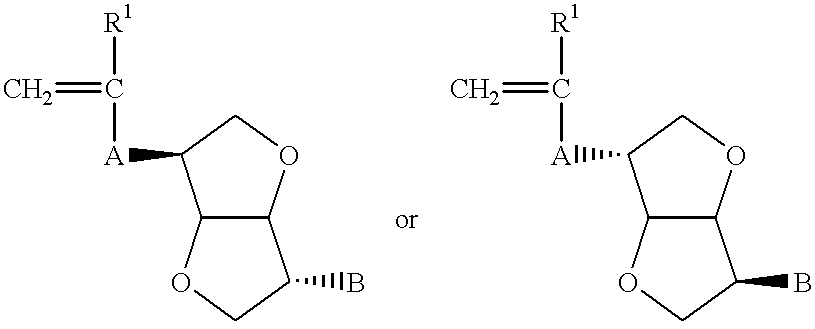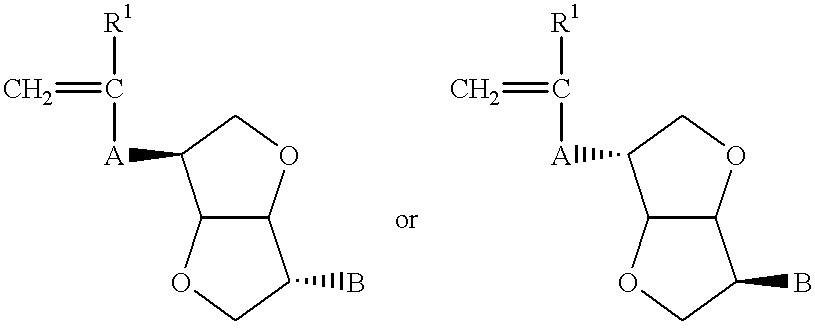Optically active monomer, liquid crystal polymer, and optical element
a liquid crystal polymer and monomer technology, applied in the field of optically active monomers, can solve the problems of hindering light-weighting and thinning of liquid crystal displays, difficult to increase luminance and decrease the electric power consumed by liquid crystal display devices, and the thickness of optical elements, so as to improve the efficiency of light utilization, reduce surface reflection loss, and improve the effect of light utilization efficiency
- Summary
- Abstract
- Description
- Claims
- Application Information
AI Technical Summary
Benefits of technology
Problems solved by technology
Method used
Image
Examples
example 2
[0069] 13
[0070] In 16.5 ml of tetrahydrofuran were dissolved 0.168 part (0.31 mmol) of the optically active monomer represented by the formula (b1) and 1.56 parts (3.78 mmols) of a monomer represented by the above-described formula (d1) by heating in a reaction vessel, after stabilizing the reaction system at a temperature of from 55 to 60.degree. C., the inside atmosphere was replaced with a nitrogen gas, 0.5 ml of a tetrahydrofuran solution having dissolved therein 0.5 part of azobisisobutyronitrile was added dropwise to the solution in the absence of oxygen, and the polymerization was carried out for 3 hours. The reaction mixture obtained was gradually poured in 150 ml of diethyl ether with stirring to obtain precipitates of a white polymer and by collecting the precipitates by filtration and drying, a copolymer was obtained (yield 58%). The glass transition temperature of the copolymer was 90.degree. C. and the copolymer showed a cholesteric structure having an isotropic phase t...
example 3
[0071] According to Example 2, a copolymer having a glass transition temperature of 92.degree. C. and showing a cholesteric structure having isotropic phase transition temperature of 275.degree. C. was obtained using 0.15 part (0.28 mmol) of the optically active monomer represented by the formula (b1) and 1.64 parts (3.98 mmols) of the monomer rrepresented by the above-described formula (d1).
example 4
[0072] According to Example 2, a copolymer having a glass transition temperature of 95.degree. C. and showing a cholesteric structure having isotropic phase transition temperature of 282.degree. C. was obtained using 0.13 part (0.24 mmol) of the optically active monomer shown by the formula (b1) and 1.96 parts (4.76 mmols) of the monomer rrepresented by the above-described formula (d1).
PUM
| Property | Measurement | Unit |
|---|---|---|
| glass transition temperature | aaaaa | aaaaa |
| thickness | aaaaa | aaaaa |
| thickness | aaaaa | aaaaa |
Abstract
Description
Claims
Application Information
 Login to View More
Login to View More - R&D
- Intellectual Property
- Life Sciences
- Materials
- Tech Scout
- Unparalleled Data Quality
- Higher Quality Content
- 60% Fewer Hallucinations
Browse by: Latest US Patents, China's latest patents, Technical Efficacy Thesaurus, Application Domain, Technology Topic, Popular Technical Reports.
© 2025 PatSnap. All rights reserved.Legal|Privacy policy|Modern Slavery Act Transparency Statement|Sitemap|About US| Contact US: help@patsnap.com



